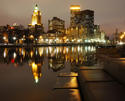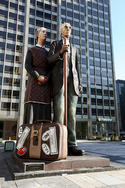The preferred story for California's economy runs like this:
In the beginning there was prosperity. It started with gold. Then, agriculture thrived in California's climate. Movies and entertainment came along in the early 20th Century. In the 1930s there was migration from the Dust Bowl. California became an industrial powerhouse in World War II. Defense, aerospace, the world's best higher education system, theme parks, entertainment, and tech combined to drive California's post-war expansion. read more »




















